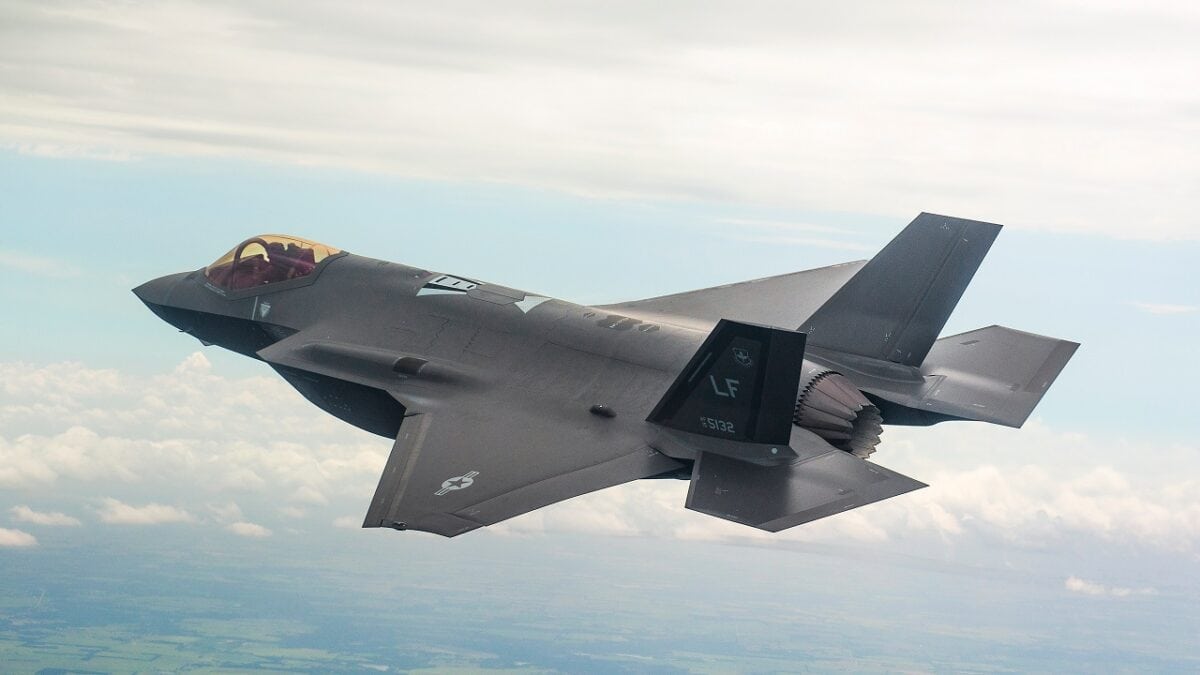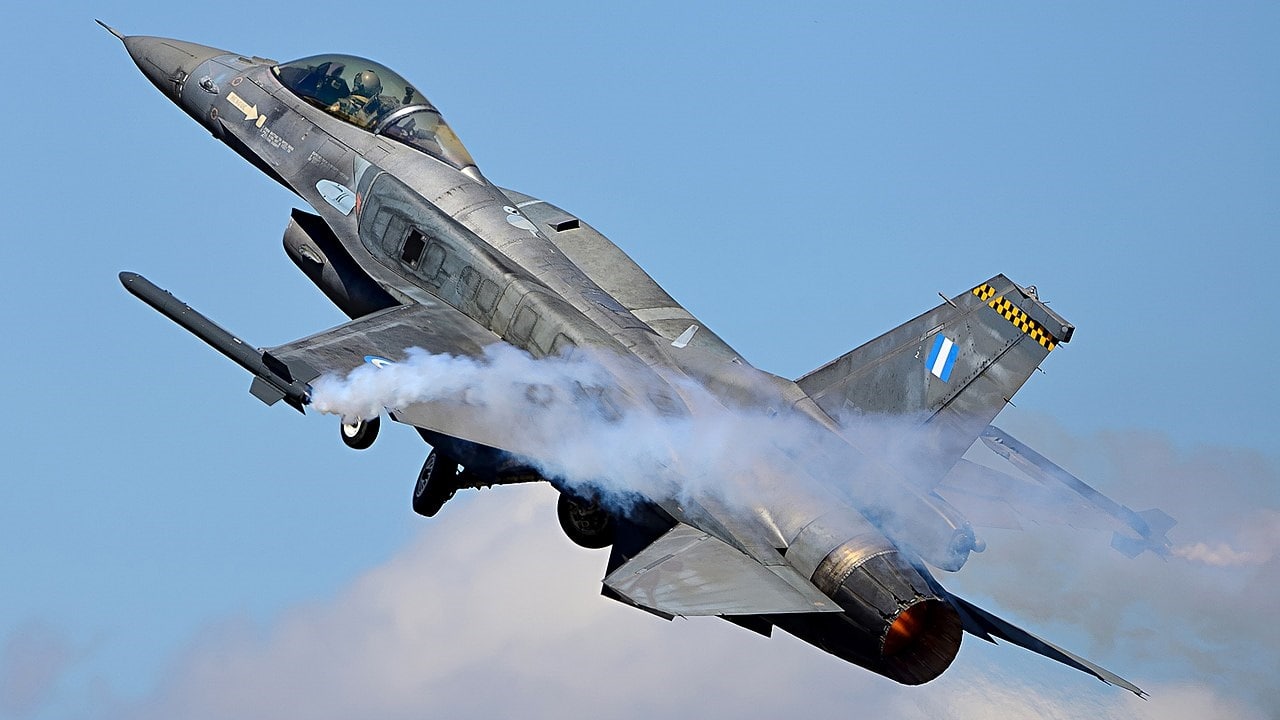The Hellenic Air Force is one of NATO’s best. Greek pilots routinely achieve top spots in NATO exercises and schools. But geopolitical circumstances force this highly capable NATO air force to daily counter the Turkish Air Force, even though Turkey also is a NATO member.
Fighter Jet Inventory
As of November, the active fighter jet inventory of the Hellenic Air Force consists of the following aircraft:
– 153 F-16 Fighting Falcons (Block 72, Block 52+/ADV, Block 50, Block 30)
– 24 Mirage 2000-5 Mk2s
– 34 F-4E Phantoms
– 8 Rafale F3Rs
That makes for a total of 219, and the Hellenic Air Force will be adding and upgrading more aircraft soon.
According to Greek Minister of Defense Nikolaos Panagiotopoulos, the Hellenic Air Force will add six F-16 Block 72 (Viper) Fighting Falcons by the end of the year. They will also probably add another four Rafale F3Rs.
In total, the Hellenic Air Force is working with Lockheed Martin to upgrade 83 F-16s to the Viper module, while it has ordered a total of 24 Rafale F3R fighter jets.
The Rafale’s Excellence
The Rafale F3R was an unexpected purchase by the Greek military, and it came as a direct response to Turkish aggression in the spring of 2019 and the summer of 2020. Ankara first tried to flood Greece with migrants, and it then sparked a limited military confrontation in the Aegean Sea.
With 14 hardpoints, the Rafale F3R can pack quite a punch. It can carry a combination of different weapons systems, including the Mica IR/EM air-to-air missile, GBU 12/16/24 laser-guided bombs, AASM GPS-guided bombs, SCALP EG cruise missiles, and the Exocet AM39 Block 2 anti-ship missile.
What makes the Rafale F3R such a deadly fighter jet, though, is the Meteor long-range air-to-air missile. This beyond-visual-range munition can lock on and strike enemy aircraft from a range of 90 miles, allowing the Rafale F3R to shoot down enemy aircraft outside the range of their weapons.
In addition to these munitions, the Rafale F3R has a 30mm gun.
The Greek squadron that flies the Rafale F3R aircraft was just given initial operational capability. This means that the Rafale F3Rs can undertake some but not all of the squadron’s mission sets, which are air intercept and naval strike.
The Main Adversary: The Turkish Air Force
Of course, no overview of the Hellenic Air Force would be complete without a mention of the fleet and capabilities of the Turkish Air Force, undoubtedly the Greek force’s single biggest threat.
Today, the Turkish Air Force has a fleet of 292 fighter jets. The breakdown is relatively simple: Turkey can field 234 F-16 Fighting Falcons and 48 F-4 Phantoms.
More specifically, the Turkish Air Force has 100 F-16 Block 40M, 70 F-16 Block 50M, 35 F-16 Block 30M, and 29 F-16 Block 50+ Adv. The F-4 Phantoms are used for reconnaissance and attack missions, but their age and a lack of spare parts mean that only a small fraction of the 48 aircraft is still operational.
After its expulsion from the F-35 Joint Strike Fighter program – a response to Turkey’s purchase of the Russian S-400 air defense system a few years ago – Turkey has tried to upgrade its F-16 fighter jet fleet. Ankara has sent a request for the purchase of 40 F-16 Vipers and the upgrade of 80 of its current F-16s to the Viper module. However, that request faces strong, bipartisan opposition in the U.S. Congress due to the anti-U.S. and anti-Western behavior of Turkish President Recep Tayyip Erdogan.
Despite its large fleet of fighter jets, the Turkish Air Force is not doing very well. Following the attempted coup d’etat in 2016 that failed to overthrow Erdogan, the Turkish Air Force lost a great number of experienced pilots and maintainers. In addition, the dramatic worsening of relations with the United States has cost the Turkish Air Force dearly in terms of spare parts. As a result, only part of the 292 fighter jets are operational. (Some figures put the available fleet at around 150 fighter jets, or 50% of the total.)
The Turkish Air Force has increasingly turned to unmanned aerial systems, most notably the TB2 Bayraktar, to make up for the lack of available fighter jets.
F-35: The Next Day
It has already added the highly effective Rafale F3R, but the Hellenic Air Force is looking toward the F-35 as its fifth-generation fighter jet.
At the sidelines of NATO’s June summit in Spain, Greek Prime Minister Kyriakos Mitsotakis said that Greece officially expressed its intentions to purchase one squadron of 24 F-35A Lighting II stealth fighter jets, with the option of buying another squadron in the future.

F-35 Joint Strike Fighter. Image Credit: Lockheed Martin.
The Greek military followed up on that statement by sending a Letter of Request to the Pentagon asking about the price and availability of the F-35A. Greece’s minister of defense and the chairman of its joint chiefs of staff have since visited Lockheed Martin headquarters and the F-35 production line.
In a recent interview, Panagiotopoulos said the F-35 Lightning II is a priority for the Hellenic Air Force. According to the minister, the Greek military is in constant talks with Lockheed Martin and the Pentagon about the potential purchase, which would make the Hellenic Air Force the sole user in the Balkans and the Aegean Sea of the most advanced stealth fighter jet in the world. The Greek military is looking to play some part in the manufacturing of the F-35 in order to boost the ailing Greek defense and aerospace industry.
Expert Biography: A 19FortyFive Defense and National Security Columnist, Stavros Atlamazoglou is a seasoned defense journalist specializing in special operations, a Hellenic Army veteran (national service with the 575th Marine Battalion and Army HQ), and a Johns Hopkins University graduate. He is currently working towards a Master’s Degree in Strategy and Cybersecurity at the Johns Hopkins University’s School of Advanced International Studies (SAIS). His work has been featured in Business Insider, Sandboxx, and SOFREP.

